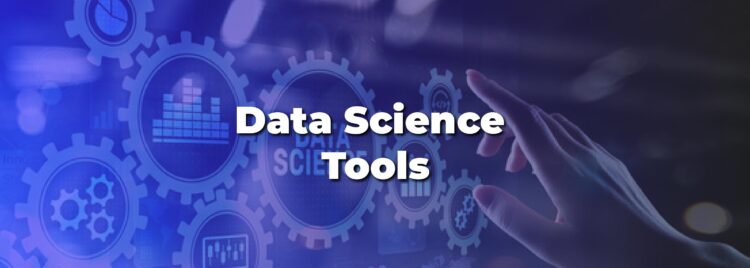Table of Contents
ToggleIntroduction
Data science is all about structured data. Data is the fuel that can drive a business to the right path and at least contributes actionable insights that can help current strategize, organize the launch of new products, or try out different experiments.
Data science tools are application software that helps professionals perform tasks like analysis, cleansing, visualization, mining, reporting, and data filtering.
Each of these tools comes with a set of some of these usages. Now should know what these tools are and how they help data scientists and professionals.
What is Data?
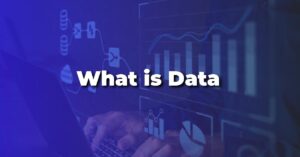
To understand Data Science Tools, we must first know what Data is. In computing, data is information translated into a form capable of processing. Related to today’s computers and transmission media, data transforms information into binary digital form. It is sustainable for data to be used as a singular subject or a plural subject.
Types of Data
In Data Science Tools, there are 2 types of Data
1. Qualitative Data
Qualitative data describes the data that fits into the categories. Qualitative data are not numerical. The categorical information involves variables describing features such as a person’s gender, hometown, etc. Absolute measures are defined in terms of natural language specifications but not numbers.
Qualitative Data has two Types. They are
Nominal data
Nominal data is qualitative information that helps label the variables without providing the numerical value. Data Science Tools, Minor data is also called the minor scale. It cannot be ordered and measured.
Ordinal data
Ordinal data is a type of data that ensures a natural order. The significant attribute of the nominal data is that the difference among the data values is not determined. The ordinal data is often indicated using a bar chart. These data are investigated and simplified through many visualization tools.
2. Quantitative Data
Quantitative data is numerical data representing the numerical value96. Data Science Tools, Numerical data gives details about the quantities of a particular object. Some cases of numerical data are height, length, size, and weight. Quantitative data can be classified into two types depending on the data sets.
The two Types of Categorizations of Quantitative Data. They are
Discrete data
Discrete data take only discrete values. Discrete information consists of only a limited number of possible values. Those values cannot be subdivided. Here, things can be calculated in whole numbers.
continuous data
Continuous data is data that can be counted. It has infinite probable values that can be selected within a specific range.
What is Data Science?
To understand Data Science Tools, we must know what Data Science is. Data science is the data to evoke significant insights for business. It is an integrative approach that combines principles and practices from mathematics, statistics, artificial intelligence, and computer engineering to examine large amounts of data.
Click here to know about future of data science: data science training in noida
What is the History of Data Science?
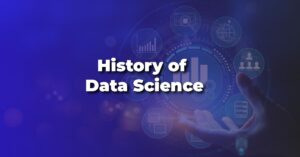
To understand Data Science Tools, we must know the history of Data Science. Data science is not new; the meanings and significations have evolved. The word was first used in the ’60s as an alternative name for statistics.
Computer science professionals formalized the term in the late ’90s. The definition of data science saw it as a separate field with three aspects: data design, collection, and analysis. It took another decade to be used outside academia.
Why is Data Science Important?
To understand Data Science Tools, we must know the importance of Data Science. Data science’s significance lies in combining domain expertise in programming, mathematics, and statistics to generate new insights and make sense of large amounts of data.
For companies, data science is a significant resource for making data-driven decisions since it describes the collecting, saving, sorting, and evaluating of data. Highly experienced computer experts frequently employ it.
When we ask ourselves why data science is essential, the answer rests because the value of data continues to increase. Data science is in great demand because it demonstrates how digital data alters organizations and enables them to make more informed and essential choices.
What is the Scope of Data Science?
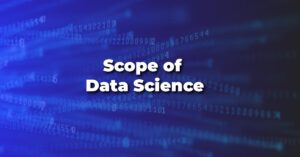
To understand Data Science Tools, we must know the scope of Data Science. Data science can be found just about anywhere these days. That includes online transactions like Amazon purchases, social media feeds like Facebook/Instagram, Netflix recommendations, and even the finger and facial recognition capabilities given by smartphones.
Data Science covers numerous cutting-edge technological ideas, such as Artificial Intelligence, the Internet of Things (IoT), and Deep Learning, to mention a few.
Data science’s effect has grown dramatically due to its advancements and technical advancements, expanding its scope. By learning Data science, you can choose your job profile from many options, and most are well paying.
These job profiles include Data Analyst, Data Scientist, Data Engineer, Machine Learning Scientist and Engineer, Business Intelligence Developer, Data Architect, Statistician, etc.
What is Data Science used for?
To understand Data Science tools, we must know the uses of Data Science.
Descriptive Analysis
The descriptive analysis inspects data to gain insights into what happened or is happening in the data. Data visualizations are pie charts, bar charts, line graphs, tables, or generated narratives.
Prescriptive Analysis
Prescriptive analytics takes predictive data to another level. Data Science Tools, It predicts what is likely to happen and suggests an optimum response to that outcome. It can analyze the possible implications of different choices and recommend the best action.
Predictive Analysis
Predictive analysis uses exact data to make accurate forecasts about data patterns that may occur in the future. Data Science Tools, It is characterized by machine learning, forecasting, pattern matching, and predictive modeling techniques. In each method, computers are trained to reverse engineer fatality connections in the data.
Diagnostic Analysis
The diagnostic analysis is a detailed data examination to understand why something happened. Techniques such as drill-down, data discovery, data mini
ng, and correlations are characterized.
Multiple data operations and transformations may be performed on a given data set to discover unique patterns in each technique. For example, the flight service might drill down on an exceptionally high-performing month to better understand the booking spike. This may lead to the discovery that many customers visit a particular city to attend a monthly sporting event.
Read about data science courses: data science course in jaipur
Data Science Tools
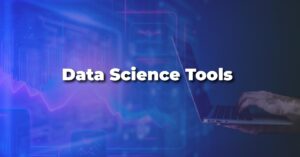
Data science tools are application software that helps professionals perform tasks like analysis, cleansing, visualization, mining, reporting, and data filtering. Each of these tools comes with a set of some of these usages. Now should know what these tools are and how they help data scientists and professionals.
In Data Science Tools, here are some Programming Data Tools
Python
Python is, by far, the most widely used data science programming language. Also considered a data science tool, Python helps data science professionals to perform data analysis over large datasets and data of different sorts.
This high-level, general-purpose, dynamic, interpreted programming language has a built-in data structure and a massive collection of libraries that can help in data analysis, cleaning, etc. It has a simple syntax and is easy to learn. Data Science Tools, It also reduces the cost of maintaining data science programs.
Since this programming language helps develop mobile, desktop, and web applications along with data science capabilities – many prefer to learn this to leverage both data science and software development capabilities that this tool renders.
It has outstanding community support, and contributors develop modules and libraries to simplify data science and programming tasks.
Jupyter Notebook
This widespread data science and web application is a computational notebook that helps manage and interact with data effectively. Apart from data science professionals, researchers, mathematicians, and even beginners in Python also leverage this tool.
It is prevalent for its easy data visualization feature and computational abilities mostly. Data science professionals and analysts can run a single line or multiple lines of code. It is a spin-off of the IPython project and supports programming languages like Julia, Python, and R.
Julia
Julia is a high-level, robust, general-purpose programming language that helps write data science code faster and easier. Data Science Tools, It can rapidly execute and implement scientific calculations and optimize experimentation and strategy implementation in datasets.
Many data science experts consider it the successor of Python. Its Just-in-Time compiling power can match the speed of various efficient programming languages like C++, C, etc., specifically in performing Data Science operations.
It requires less processing power with high speed to accomplish complex statistical calculations associated with Data Science. It also allows manual garbage collection, and data science professionals do not have to worry about memory management. Python and R is the most popular data science programming language gaining momentum and popularity among data scientists.
In data science tools, here are some visualization data tools
R Programming
R is a powerful programming language that competes with Python in data science. Professionals and companies widely use it for statistical computing and data analysis. It has an excellent user interface and spontaneously updates its interface for better programming and data analysis experience.
It has exceptional team contribution and community support, making it a valuable tool for data science. Data Science Tools, It is scalable because it has a huge collection of data science packages and libraries such as TidyR, DplyR, ReadR, SparkR, and data.table, ggplot2, etc.
Apart from statistical and data science operations, R also quickly leverages powerful machine learning algorithms. This open-source programming language comes with 7800 packages and object-oriented features. The entire language runs on RStudio.
In Data Science Tools, here are some visualization tools
Matplotlib
It is a popular 2D data visualization library for generating 2D plots and charts from data. It requires Python programming skills and works specifically with NumPy, SciPy, and Pandas. John Hunter introduced this multi-platform data visualization library in the year 2002.
One of the best features of Matplotlib is the power to render complex graphs and plots using simple lines of code. Through Matplotlib, data analysts and data scientists can create bar plots, pie charts, histograms, scatterplots, and other graphs.
This data science library has an object-oriented API that helps embed actions with other applications via general-purpose GUI modules like Tkinter, wxPython, etc. This tool is perfect for beginners who want to understand and make fast-loading data visualization using Python.
Tableau
Founded in 2003, Tableau has become a top-level data visualization and Business Intelligence tool that top MNCs and enterprises from diverse industry backgrounds leverage. Data scientists can quickly understand and solve advanced and complex data analysis and visualization problems through Tableau.
It caters to rich data visualization with various options that make information easier to understand. Over 60,000 companies utilize this tool for data visualization and creating interactive dashboards.
In Data Science Tools, here are some machine learning data tools
NLTK
Natural Language Toolkit is another Python-based tool that helps understand and algorithm work with natural languages. With the advancements in apprehending natural language processing to understand spoken or written language data or implementing NLP in apps, data science firms have started influencing data science tools like NLTK.
NLTK has become a familiar and standard tool among data science professionals because of its easy-to-work interface. Also, it caters to 50+ selections of data for developing language-oriented ML models along with lexical resources and WordNet. Many applications require NLTK for tokenizing, visualizing words, and generating parse trees to better understand the language.
It has easy-to-use text processing and helps companies develop different language-based applications Machine Translation, Speech Recognition, Parts of Speech Tagging, Text-to-Speech, and Word Segmentation.
Scikit Learn
Scikit-learn is a free machine-learning library designed on top of Python code. It has a broad spectrum of supervised and unsupervised machine learning algorithms that were designed with the help of other data science features and libraries like Matplotlib, Pandas, NumPy, and SciPy.
This library is a package of different functionalities like regression analysis, data classification, clustering of data, model selection, data pre-processing, dimensionality reduction, etc., to name a few. The preliminary use of Scikit-learn is to streamline intricate ML algorithms for execution.
It has become a well-known tool and is ideal for implementing machine learning in applications that require rapid prototyping. Scikit Learn has enormous community support & anyone can contribute to its development and enhancement.
DataRobot
DataRobot is a well-known tool in which
data science professionals and ML engineers can integrate data science tasks with machine learning and artificial intelligence and enhance team productivity.
It allows dragging and dropping datasets onto the interface to operate on them. It has a simple and easy-handling GUI that enhances the productivity of different data analytics operations for beginners and expert data science professionals. DataRobot also allows professionals to simultaneously build and deploy hundreds of data science models.
Enterprises leverage this tool to perform high-end automation on user data. This tool is also great at predictive analysis and can help people to make intelligent and compelling data-driven decisions.
In Data Science Tools, here is the business intelligence data tool
QlikView
It is one of the business-leading data science tools with unique features compared to legacy BI tools. Through QlikView, data science professionals can determine relationships between semi-structured and unstructured data & perform data analysis on these data.
Also, it does data processing much faster than other data science tools. QlikView users can also use visually appealing colors to understand the relationship among different data. Data science professionals can execute data accumulation and compression via QlikView in lesser time.
QlikView automatically determines the relationships between data entities & professionals do not have to spend much time doing this.
Conclusion
We have come across information about Data Science Tools. Data is information translated into a form capable of processing. Related to today’s computers and transmission media, data transforms information into binary digital form.
It is sustainable for data to be used as a singular subject or a plural subject. Data science is the data to evoke significant insights for business. It is an integrative approach that combines principles and practices from mathematics, statistics, artificial intelligence, and computer engineering to examine large amounts of data.
Data science tools are application software that helps professionals perform tasks like analysis, cleansing, visualization, mining, reporting, and data filtering. Each of these tools comes with a set of some of these usages.
Frequently asked questions
What are the best data science tools?
Python is, by far, the most widely used data science programming language. Also considered a data science tool, Python helps data science professionals to perform data analysis over large datasets and data of different sorts.
This high-level, general-purpose, dynamic, interpreted programming language has a built-in data structure and a massive collection of libraries that can help in data analysis, cleaning, etc.
Is Matlab part of data science tools?
MATLAB makes data science simple with tools to access and initialize data, build machine learning and divining models, and set out models for enterprise IT systems. AI for Engineers: Building an AI System.
What kind of skill is data science?
Becoming a data scientist, you have to be able to assemble and analyze data, then present your findings. This includes technical skills, like programming, manipulating databases, advanced mathematics, and data visualization, and soft skills, like collaboration and public speaking.
Which SQL is better for data science?
PostgreSQL.
Another open-source SQL database, PostgreSQL, is a relational database system known for its high level of performance and capacity to work with large data stores.

